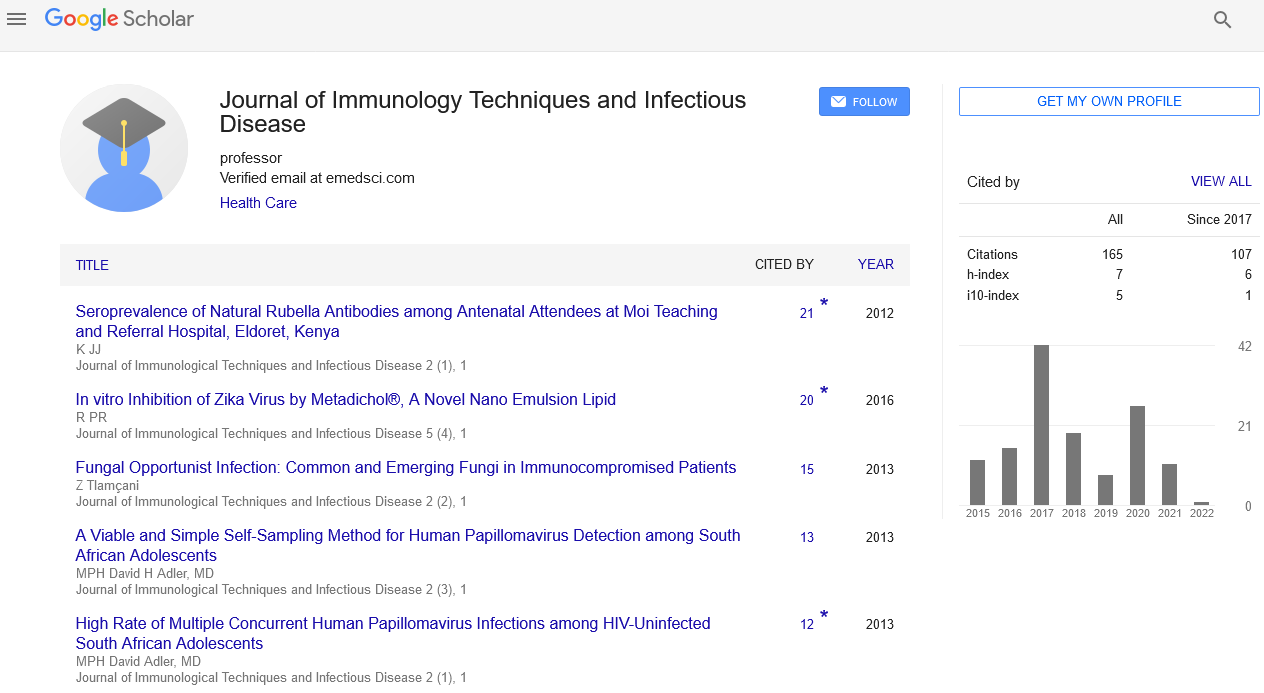Hydatid cyst epidemiology in Khuzestan, Iran: A 15-years evaluation
Amin Kamali, Mryam Kamali, Farid Yousefi, Mohammad javad Mohammadi, Sayed Mohammad Alavi, Shokrollah Salmanzadeh and Sahar Geravandi
Health Center of Khuzestan Province, Iran
Shiraz University of Medical Sciences, Iran
Ahvaz Jundishapur University of Medical Sciences, Iran
Abadan School of Medical Sciences, Iran
: J Immunol Tech Infect Dis
Abstract
Background: Hydatid cyst disease is a well-known parasitic disease globally. It develops in humans after ingestion of Echinococcus granulosus eggs. To better prevent and control hydatid cyst disease, it is crucial to identify the epidemiologic aspects of this parasitic infection. Objectives: The current study aimed to evaluate the epidemiology and features of this disease in a livestock-raising area in Khuzestan, southwest of Iran. Materials & Methods: The present study was a descriptive-analytical study conducted on 360 patients from different areas of Khuzestan Province, southwest of Iran, with a diagnosis of hydatid cyst disease, during a period of 15 years between 2000 and 2015. Data were gathered by reviewing the patient’s records. Demographic data, laboratory findings, clinical features, the need for surgical debridement, and the outcome were collected. Data were summarized and analyzed using descriptive and analytical statistical methods, respectively. Results: Findings showed that 158 males (43.9%) and 202 females (56.1%) were recorded. The mean age of the patients was 37.36±15.2 years. Results of the study showed that most patients were in the over-50-years-old age group [103 (28.6%)], and the less-than-10-years-old age group had the lowest number [19 (5.3%)]. Most of the cysts were detected in the liver [234 (65%)]. There was no statistically significant association between sex, residing area, and animal contact and the number of the cysts (p=0.12, 0.36, and 0.95, respectively); however, a significant association was found between sex and the body organ involved (p=0.007), so that liver involvement was mostly detected in females (79.9%), while involvement of the lung was mostly found in males (66.4%). No statistically significant association was found between age and the number of the cysts or the body organ involvement (p=0.35 and 0.61, respectively). Conclusions: Our study showed that hydatid cyst disease could be surprisingly common in apparently low-risk populations, such as those living in urban areas or without direct contact with dogs and farm animals. So, identification of the populations most at risk and educating the community about the most common modes of acquisition could be helpful for the control and prevention of this disease.
 Spanish
Spanish  Chinese
Chinese  Russian
Russian  German
German  French
French  Japanese
Japanese  Portuguese
Portuguese  Hindi
Hindi 
